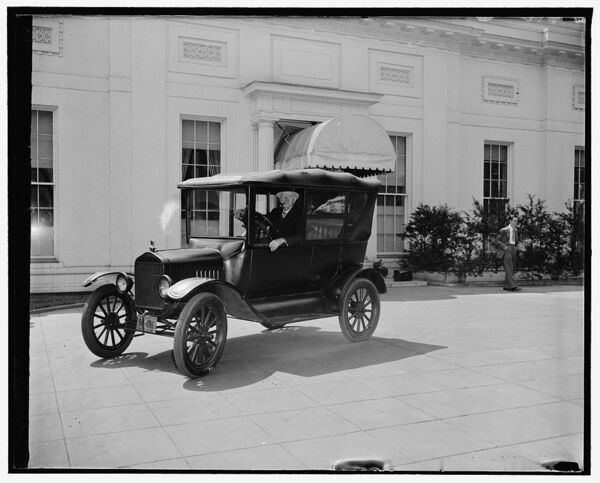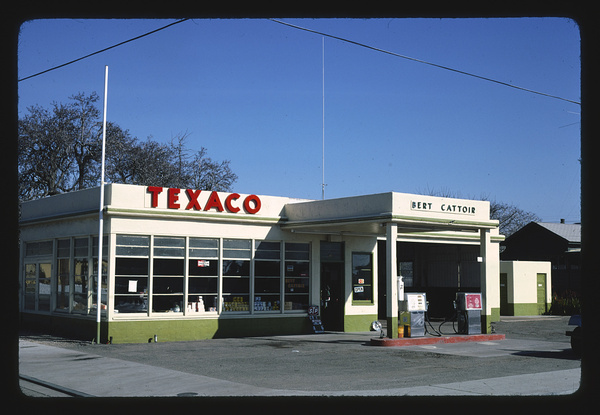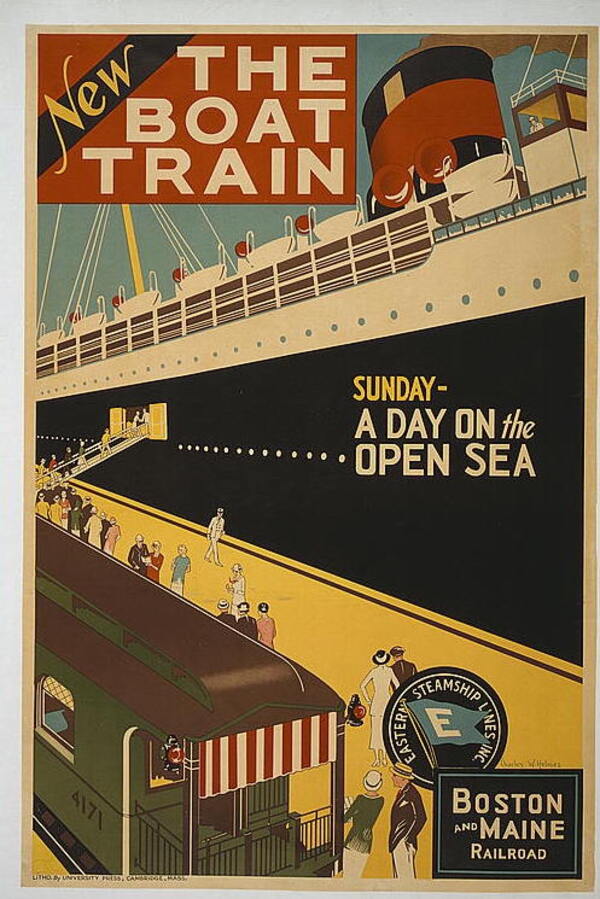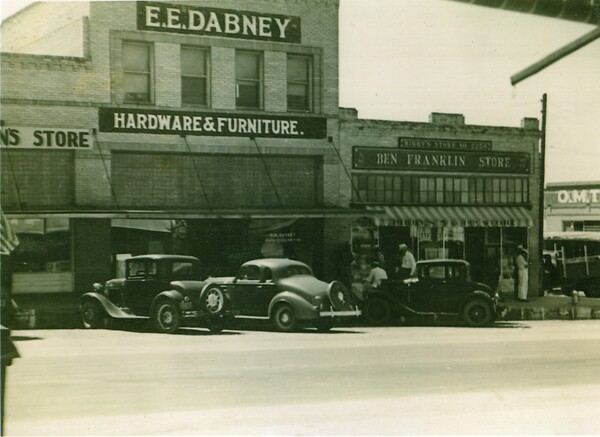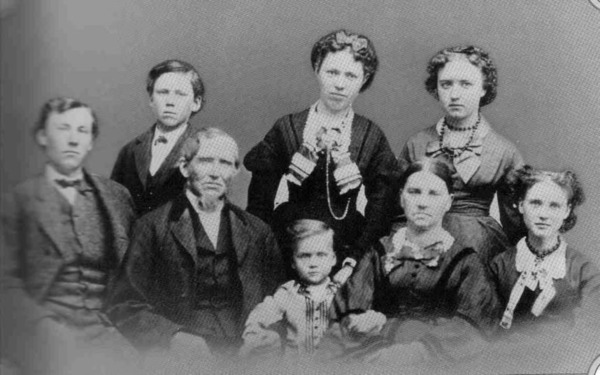In 1927, the film The Jazz Singer became the first film to be released with sound. These films, known at the time as "talking pictures" or "talkies", didn't catch on initially, but by 1929, the major studios were putting huge budgets behind their production and marketing. This gave rise to some of the most extravagant and bizarre billboards in history - namely, the human billboard.
Little did anyone know that on October 24 of that year, it would all come to an end with Black Thursday and the start of the Great Depression. But for a brief period of time, these studios did something magnificent that completely captured the height of the Roaring 20's. Let's take a look...
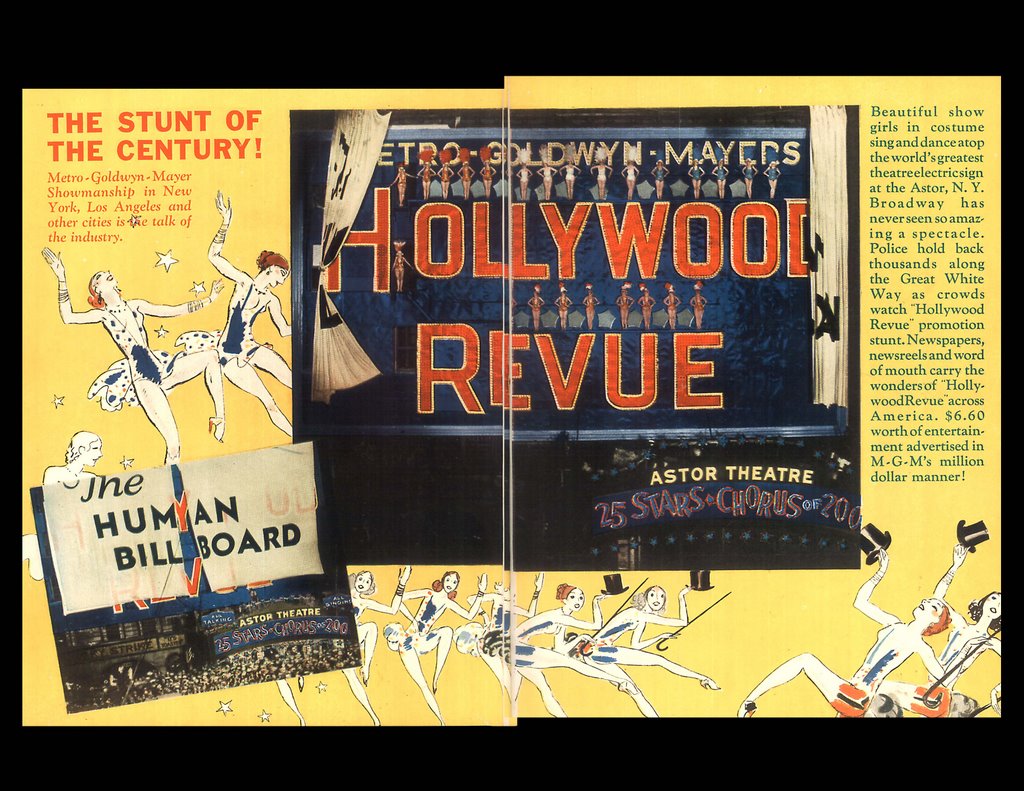
In June of 1929, MGM premiered their first full-length sound musical, the Hollywood Revue of 1929. It featured greats like Buster Keaton, Jack Benny, and Joan Crawford, and MGM wanted it to attract as much attention as possible.
The hatched the over-the-top idea of making a human billboard with a narrow catwalk installed above the bright, glowing letters in the sign. On these catwalks they would place a team of showgirls who would pose for hours and smile at the amazed onlookers.
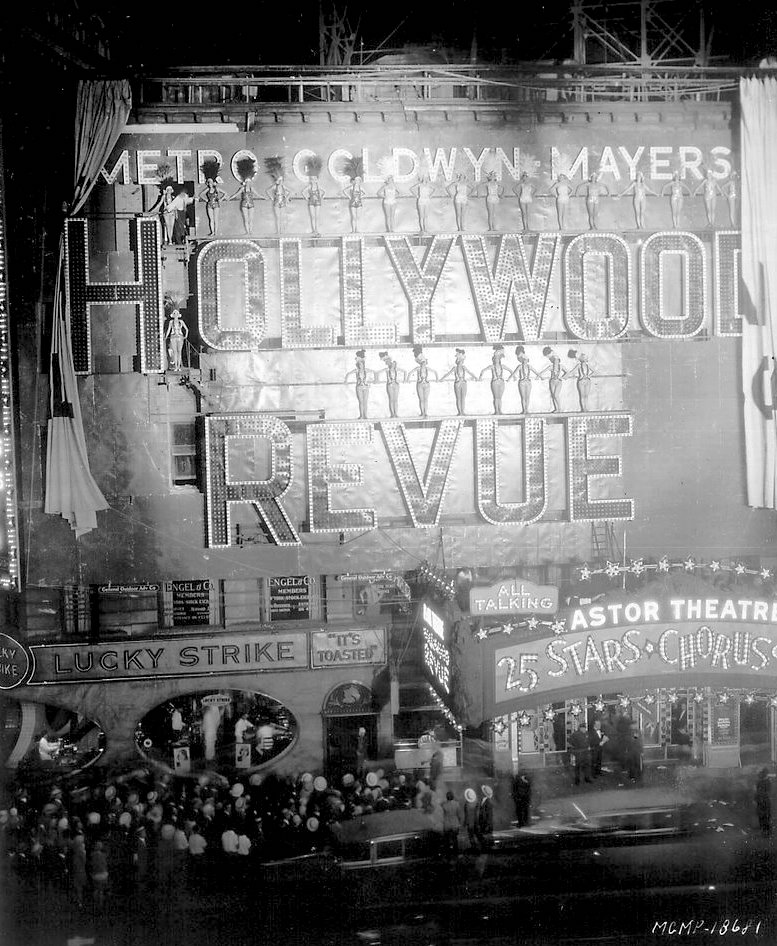
And so on June 20, 1929, they revealed this magnificent sign at the Astor Theater. Lest you think we are over-stating how narrow the catwalks were, take a closer look at the photo above! As you'll see, there wasn't much space -- and you can tell that some of the girls were hanging on with all they had! If you take a look at the crowd below them however, you'll see why it was so effective.
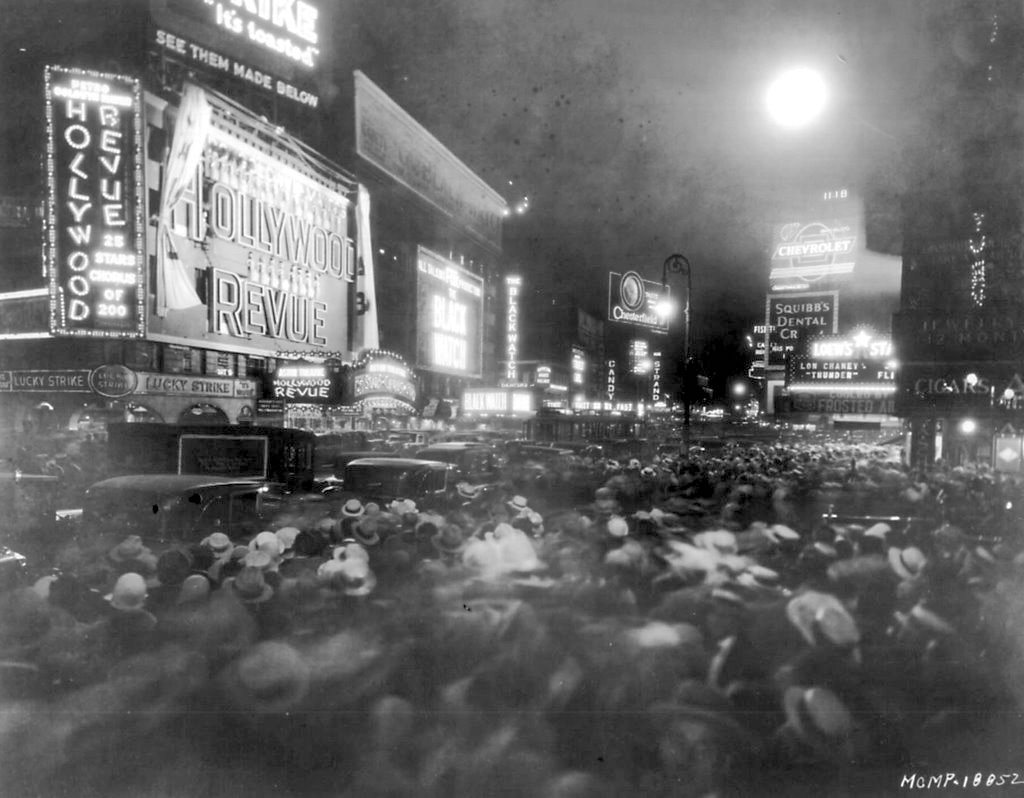
Here's another view outside the Astor Theater in June, 1929. The crowds became such a problem that the city thought about shutting the sign down, but the producers of the show relented. Meanwhile, other theaters were starting to take notice...

A theater in Cleveland attempted to launch its own billboard, but the city not only banned it, but also instructed its local fire department to hose-down any showgirls that would come out on the sign!
A few weeks after this, Fox would successfully its own billboard for a premiere of The Cockeyed World at The Majestic Theater in Dallas, Texas. What the display lacked in visual appeal, it made up for in performance: Thirteen boys in Marine uniforms stood on the platform accompanied by a 30-piece military band, and they would do a call-and-response with a team of buglers on the roof across the street! The crowds nearly shut the city down, but city officials still deemed it a success.
Meanwhile, back in New York, the workers at the Selwyn Theatre were finalizing a billboard that would go even further...
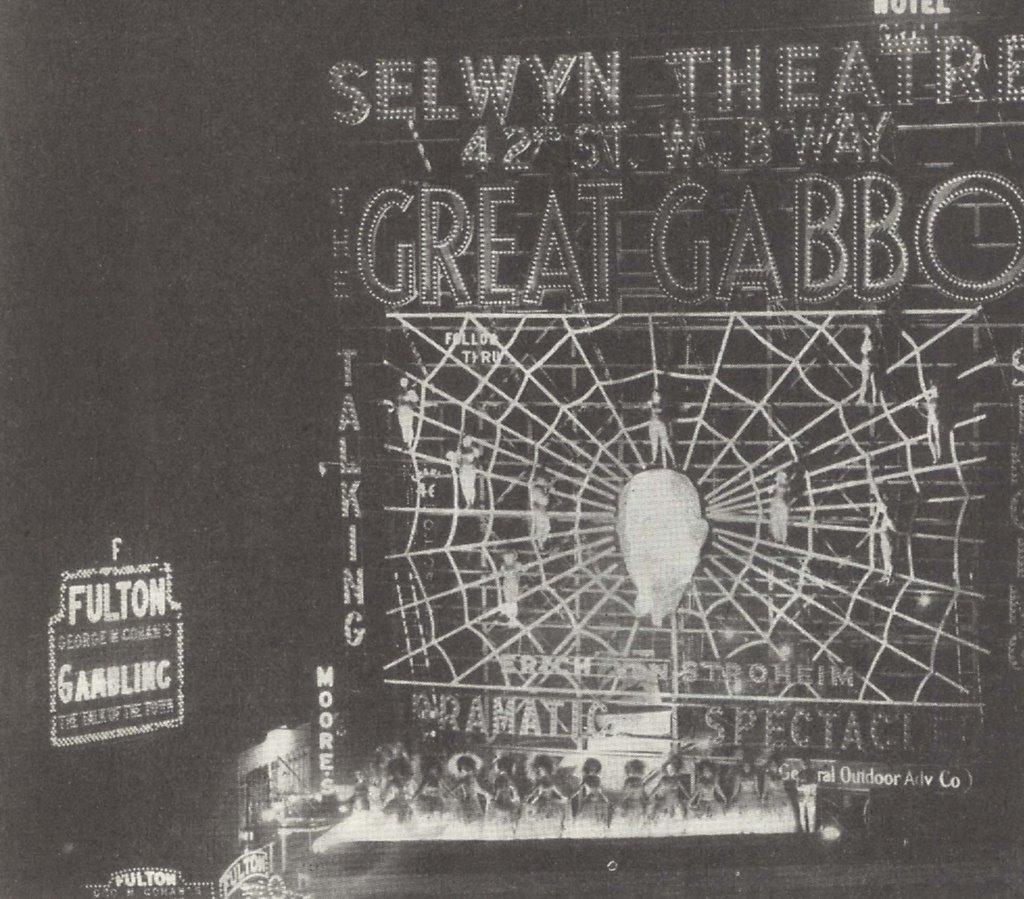
At the start of October, a huge electrified spider web was revealed in front of the Selwyn Theater. On it they placed 20 dangling showgirls, and for added effect, they had 10 ballet dancers constantly dancing on the edge of the roof above.
Taking a cue from Cleveland, the New York police department attempted to shutter the sign, but the theater fought back. The dispute went to court and the producers convinced the presiding judge to come see the billboard for himself before ruling. After viewing it for a half-hour, the judged ruled in favor of the theater saying, "Broadway has become famous for its gargantuan display of mazda signs and that these electrical advertisements help to draw tourists to the thoroughfare from all parts of the world."
And so the billboards remained, though everything would go dark soon as the stock market would experience "Black Thursday" a few weeks later. But for this brief period of time, competition among movie studios and theaters produced some of the most interesting and marvelous advertising in history.
If you liked this story, hit the "Share" button below to pass it on to friends...
Next Article
